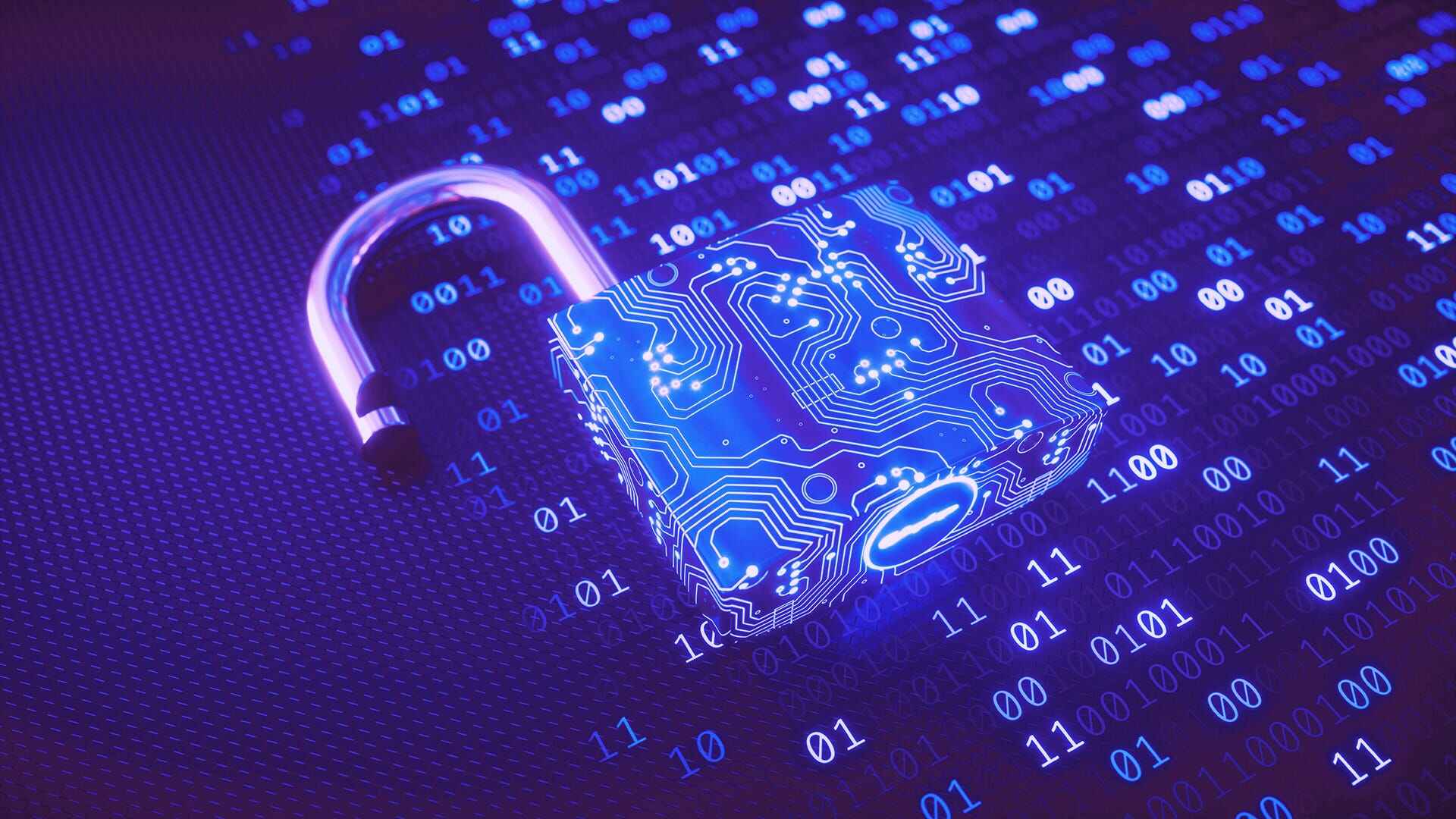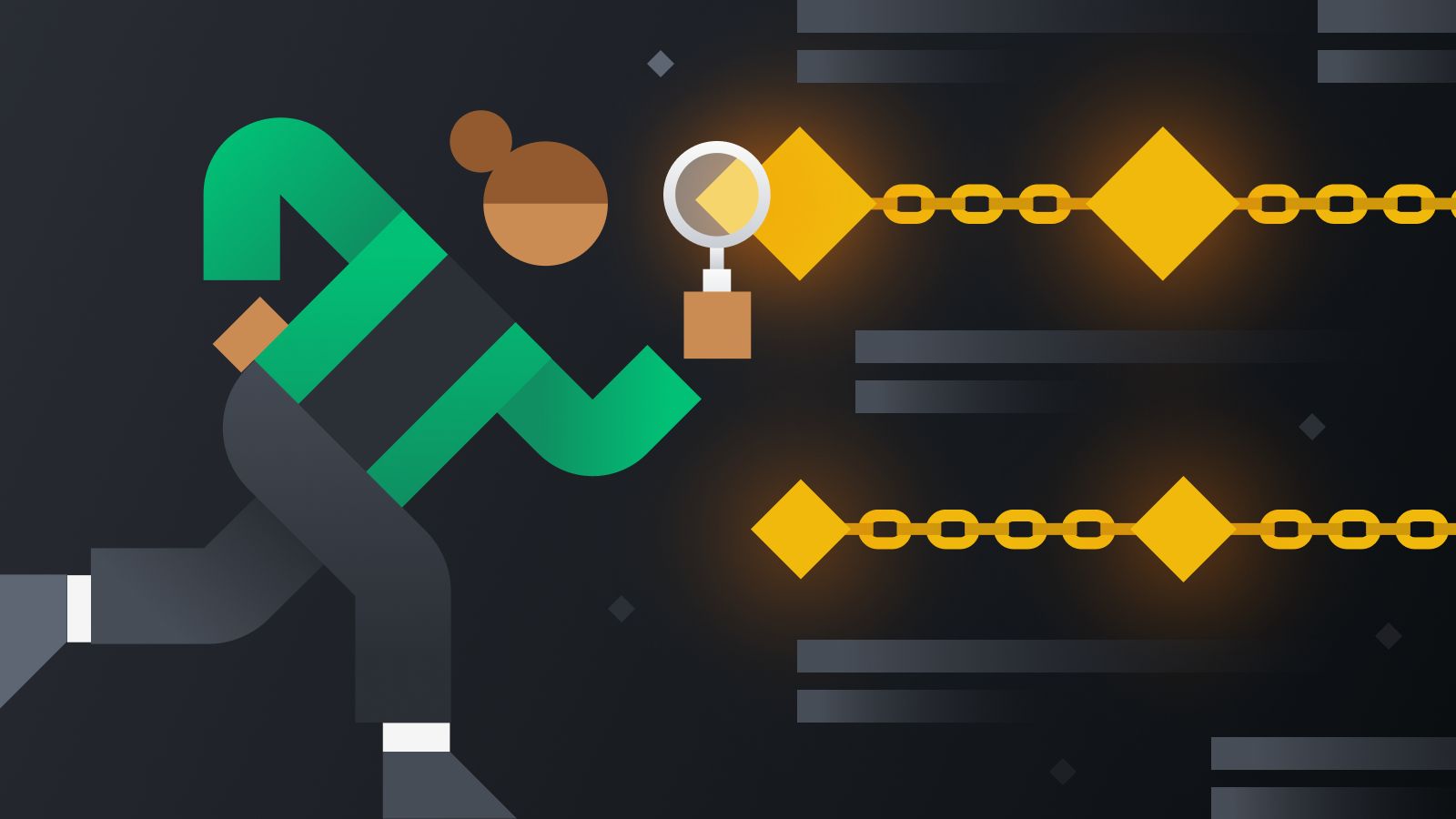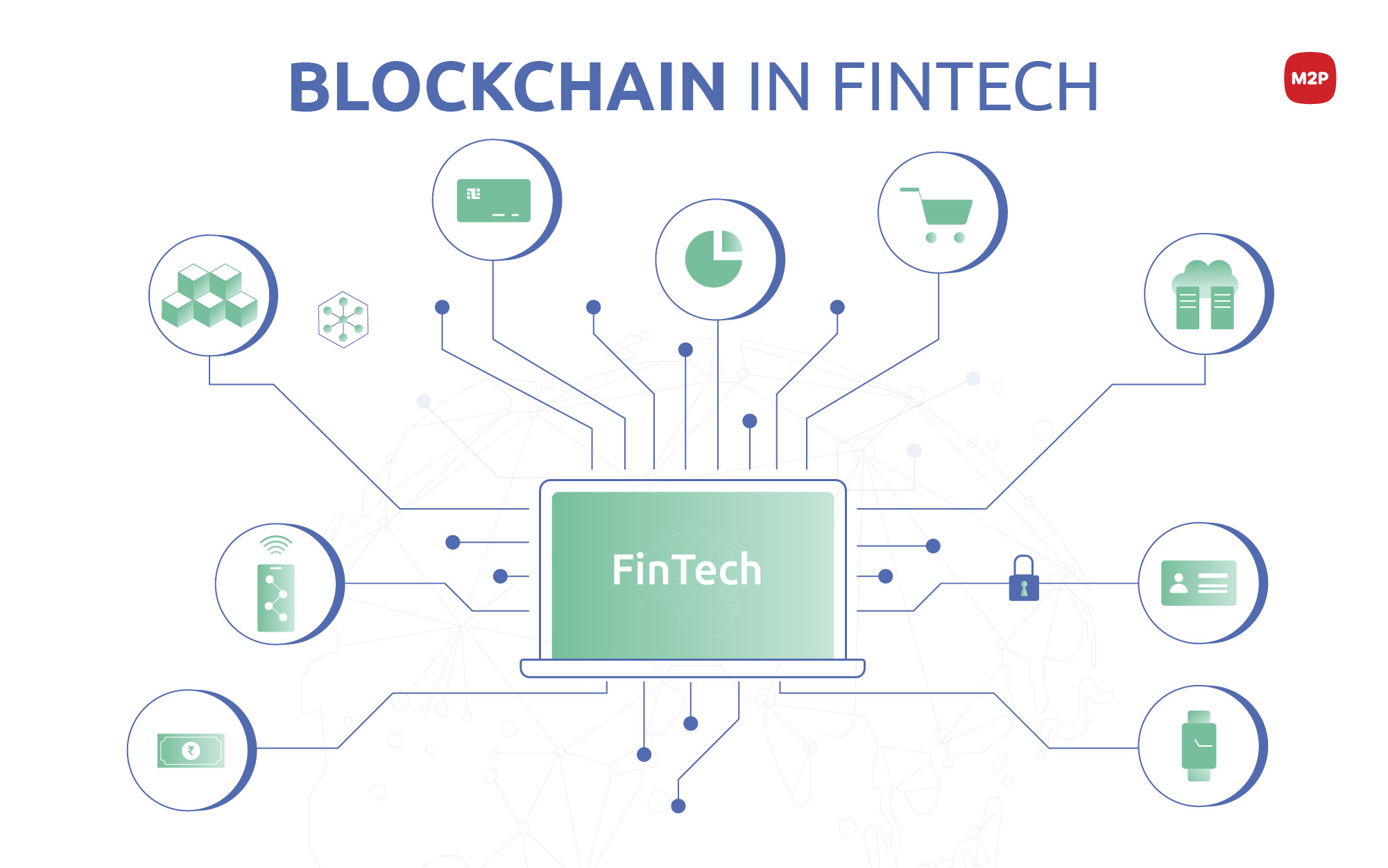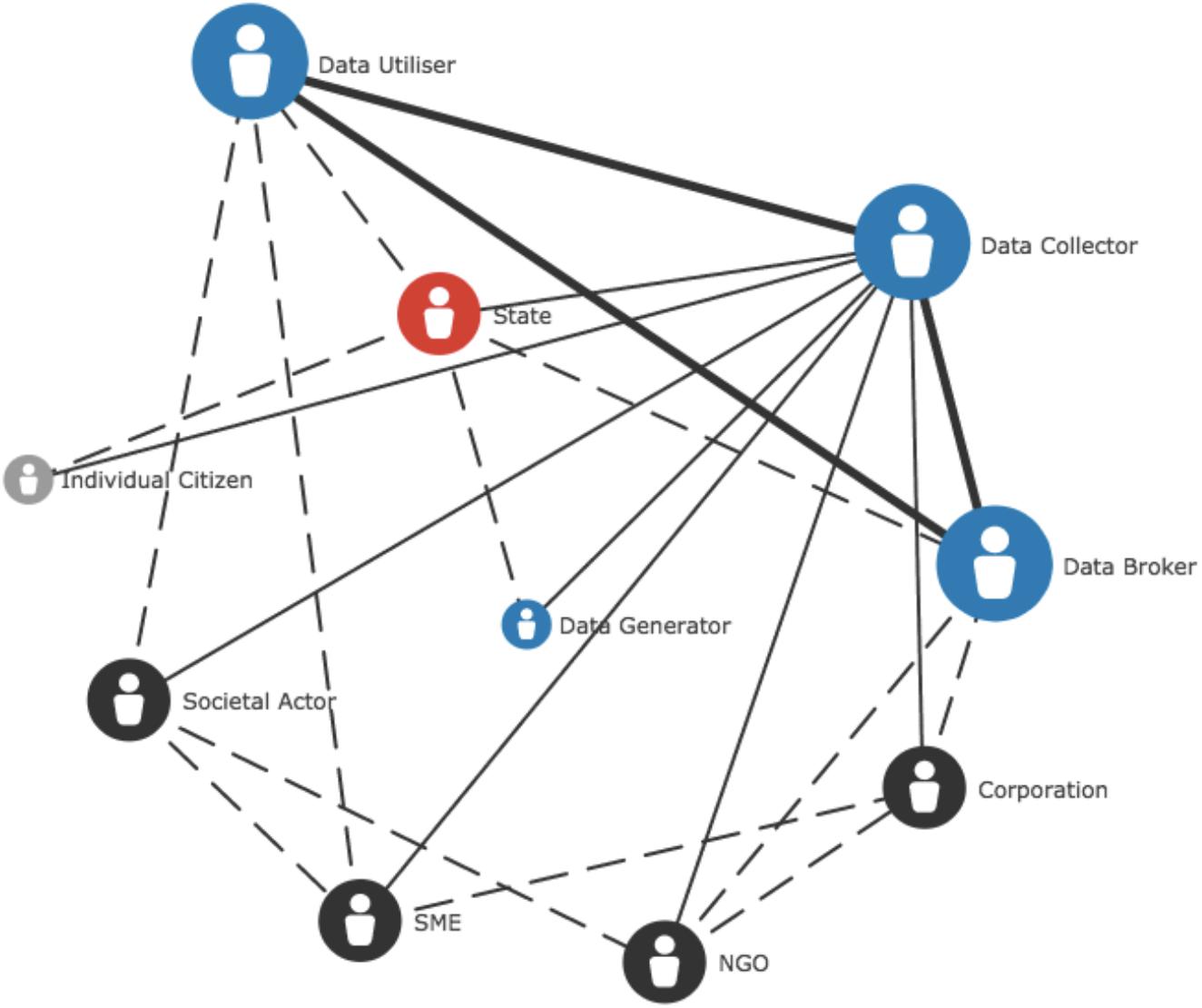What is the Blockchain
The blockchain is a decentralized and distributed digital ledger that records transactions across a network of computers. It was originally introduced as a core component of Bitcoin, the first cryptocurrency, but its applications have extended far beyond that, with the potential to revolutionize various industries.
At its core, the blockchain is a database that consists of a series of blocks, each containing a list of transactions. These blocks are linked together using cryptographic techniques, forming a chain. What sets the blockchain apart from traditional databases is its distributed nature – instead of being stored on a single server or controlled by a central authority, the blockchain is replicated and maintained by numerous computer systems, known as nodes, spread across the network.
This decentralized structure provides several key benefits. First and foremost, it enhances security. Since the blockchain is not controlled by a single entity, it is extremely difficult for hackers to compromise the system or manipulate the data. Additionally, the distributed nature of the blockchain ensures transparency and immutability. Every transaction recorded on the blockchain is visible to all participants, and once a block is added to the chain, it becomes nearly impossible to alter or delete.
Another important characteristic of the blockchain is its ability to enable trustless transactions. Traditionally, when two parties want to make a transaction, they usually rely on intermediaries such as banks or payment processors to facilitate and verify the transaction. However, with the blockchain, transactions can be directly executed and verified by the network itself, eliminating the need for intermediaries. This not only reduces costs but also increases the efficiency and speed of transactions.
Furthermore, the blockchain has the potential to revolutionize various industries beyond finance. Its decentralized and transparent nature makes it suitable for applications such as supply chain management, voting systems, intellectual property protections, and more. By utilizing the blockchain, these industries can streamline processes, increase security, and build trust among participants.
In summary, the blockchain is a decentralized and distributed digital ledger that records transactions across a network of computers. It offers enhanced security, transparency, immutability, and the ability to enable trustless transactions. With its potential to revolutionize various industries, the blockchain is garnering attention and adoption globally.
How Does the Blockchain Work
Understanding how the blockchain works requires a closer look at its underlying mechanisms. The blockchain operates through a combination of cryptographic algorithms, consensus protocols, and network structures.
Whenever a new transaction is made on the blockchain, it is bundled together with other transactions into a block. But before this block is added to the chain, it needs to be verified and validated by the network of nodes. This verification process ensures that the transactions are legitimate and that the digital signatures associated with them are valid.
To achieve consensus on the validity of transactions, various consensus algorithms are utilized. The most widely used consensus algorithm is Proof of Work (PoW), where nodes called miners compete to solve complex mathematical puzzles. The first miner to solve the puzzle gets the right to add the block to the blockchain and is rewarded with cryptocurrency.
Once the block is added to the chain, it is time-stamped and linked to the previous block using cryptographic hash functions. This creates a secure and tamper-proof record of all transactions in chronological order. Moreover, the decentralized nature of the blockchain ensures that multiple copies of the ledger exist across the network, making it virtually impossible for a single entity to manipulate the data.
Another key component in blockchain technology is the concept of public and private keys. A public key serves as the address or identifier of a user on the blockchain, while a private key is a secret key that grants access to the user’s digital assets and allows them to sign transactions. This cryptographic system ensures the security and integrity of the transactions on the blockchain.
Blockchain networks can be either public or private. In a public blockchain, anyone can participate, verify transactions, and become a node in the network. Bitcoin and Ethereum are examples of public blockchains. In contrast, private blockchains restrict participation and are often used by companies or organizations to maintain control over the network. These private blockchains are more suited for use cases where privacy and scalability are essential.
In summary, the blockchain operates through a combination of cryptographic algorithms, consensus protocols, and network structures. Transactions are bundled into blocks, verified by a network of nodes using consensus algorithms, and added to the chain by miners. The use of public and private keys ensures transaction security, and the decentralized nature of the blockchain guarantees transparency and immutability.
Nodes and Blockchain Networks
Nodes play a crucial role in the functioning of blockchain networks. A node refers to any computer or device that participates in a blockchain network and maintains a copy of the entire blockchain. These nodes work together to validate transactions, enforce consensus, and maintain the integrity of the network.
In a blockchain network, nodes communicate with each other through a peer-to-peer (P2P) network. This means there is no central authority governing the network, and all nodes are equal participants. Each node stores a copy of the blockchain and has the ability to verify and validate transactions.
There are different types of nodes in a blockchain network. Full nodes, also known as network nodes or validator nodes, store a complete copy of the blockchain and participate in the consensus process. These nodes validate new transactions, check the authenticity of digital signatures, and ensure that all transactions follow the rules of the network’s protocol.
Another type of node is the lightweight or thin client node. These nodes don’t store a complete copy of the blockchain but rely on full nodes to provide them with relevant information. Lightweight nodes are commonly used in scenarios where storage capacity or computational resources are limited, such as on mobile devices.
In addition to validating transactions, nodes in a blockchain network also maintain the network’s security and integrity. By participating in the consensus process, nodes work together to ensure that all transactions are valid and that the blockchain remains tamper-proof. If a malicious node attempts to alter the data or carry out fraudulent transactions, the other honest nodes will identify and reject these attempts, preserving the network’s integrity.
Blockchain networks can be classified into different categories based on their level of decentralization. Public blockchains, such as Bitcoin and Ethereum, are open to anyone who wants to participate. They rely on a large number of diverse nodes to validate transactions and maintain consensus.
Private blockchains, on the other hand, are restricted and require permission to participate. They are often used by organizations or consortiums that want to maintain control over the network and limit access to trusted entities. Private blockchains may have a smaller number of nodes compared to public blockchains, which can lead to faster transaction processing times and increased scalability.
In summary, nodes are essential components of blockchain networks. They maintain copies of the entire blockchain, validate transactions, enforce consensus, and ensure the security and integrity of the network. With different types of nodes and varying levels of decentralization, blockchain networks can cater to a wide range of use cases and requirements.
Accessing the Blockchain
Accessing the blockchain refers to the ability to interact with and utilize the functionalities of a blockchain network. There are different ways to access the blockchain, depending on the level of involvement and the specific requirements of the user.
One common method of accessing the blockchain is through a cryptocurrency wallet. A cryptocurrency wallet is a digital wallet that stores a user’s public and private keys, which are necessary for securely sending, receiving, and storing digital assets on the blockchain. Wallets can be web-based, mobile-based, or hardware-based, each offering different levels of security and convenience. These wallets allow users to check their account balances, make transactions, and track the history of their transactions on the blockchain.
Another way to access the blockchain is through a blockchain explorer. A blockchain explorer is a web-based tool that allows users to view and search the contents of the blockchain. It provides a user-friendly interface to explore the blocks, transactions, and addresses on the blockchain. Users can verify the status of transactions, view the details of specific blocks, and track the movement of digital assets. Blockchain explorers are particularly useful for gaining transparency and understanding the activity happening on the blockchain.
For developers or businesses looking to build applications or integrate the blockchain into their existing systems, accessing the blockchain often involves using Application Programming Interfaces (APIs). Blockchain APIs provide a set of protocols and tools that allow developers to interact with the blockchain network programmatically. These APIs enable functionalities such as creating and managing digital assets, querying transaction data, and executing smart contracts. They provide a bridge between the applications and the blockchain network, opening up a world of possibilities for developers to build decentralized applications (DApps) and leverage the blockchain’s capabilities.
In addition to wallets, blockchain explorers, and APIs, some blockchain networks also offer their own client software that allows individuals or organizations to access and participate in the network directly. These clients typically require users to download and run specific software on their devices, which connects them to the blockchain network and enables them to become a node in the network. This method of access provides users with more control and autonomy but requires technical knowledge and resources to set up and maintain.
It’s worth noting that accessing the blockchain can differ depending on whether it is a public or private blockchain. Public blockchains generally have fewer access restrictions and allow anyone to participate, whereas private blockchains may require permission or have limited access to a specific group of trusted entities.
In summary, accessing the blockchain involves using cryptocurrency wallets, blockchain explorers, APIs, or client software to interact with the network’s functionalities. These methods provide users with the ability to manage their digital assets, explore the blockchain’s contents, develop applications, and participate in the network’s consensus. The specific method of access may vary based on the user’s needs and the characteristics of the blockchain network.
Public and Private Blockchains
When it comes to blockchain technology, there are two main types of networks: public blockchains and private blockchains. While both serve the purpose of recording and verifying transactions, they differ in terms of accessibility, participation, and governance.
A public blockchain is open to anyone who wants to participate. It is a decentralized network where transactions are validated and added to the blockchain by a consensus mechanism, typically Proof of Work (PoW) or Proof of Stake (PoS). Bitcoin and Ethereum are popular examples of public blockchains.
One key characteristic of public blockchains is their transparency. All transactions recorded on the blockchain are visible to anyone on the network. This transparency promotes trust and accountability, as participants can verify the authenticity and integrity of transactions without relying on a central authority.
Public blockchains also offer a high level of security due to their decentralized nature. The distributed network of nodes ensures that there is no single point of failure, making it extremely difficult for malicious actors to manipulate the system or compromise the data.
On the other hand, private blockchains restrict access and participation to a specific group of trusted entities. These blockchains are often used by organizations or consortiums for internal purposes. They provide a more controlled environment, allowing participants to have greater privacy and confidentiality.
In a private blockchain, the consensus mechanism may differ from that of public blockchains. Since the network is operated by a limited number of pre-approved nodes, a consensus algorithm such as Byzantine Fault Tolerance (BFT) or Practical Byzantine Fault Tolerance (PBFT) may be used. This allows for faster transaction processing and higher scalability compared to the energy-intensive processes of public blockchains.
Private blockchains are suitable for use cases where participants require a higher level of control over the network and need faster transaction speeds. They are often used in industries such as finance, supply chain management, and healthcare, where privacy, scalability, and compliance are of utmost importance.
While public blockchains prioritize decentralization and transparency, private blockchains emphasize privacy, control, and efficiency. However, it’s important to note that private blockchains still offer some benefits of blockchain technology, such as immutability and auditability, even if they don’t exhibit the same level of decentralization as public blockchains.
In summary, public and private blockchains are two different approaches to utilizing blockchain technology. Public blockchains are open and transparent, accessible to anyone, and rely on decentralized consensus mechanisms. Private blockchains, on the other hand, provide a more controlled and restricted environment, often used by organizations for specific purposes. Both types have their unique advantages and are adopted based on the specific requirements of the use case.
Wallets and Keys
Wallets and keys are essential components of blockchain technology, providing users with the ability to securely manage and control their digital assets. Understanding how wallets and keys work is crucial for anyone looking to participate in the blockchain ecosystem.
In the context of blockchain, a wallet is a digital tool that allows users to store, send, and receive digital assets, such as cryptocurrencies. It serves as a secure interface between the user and the blockchain network. Wallets can be categorized into different types, including web-based wallets, mobile wallets, and hardware wallets.
A web-based wallet, also known as an online wallet, is accessible through a web browser. It is convenient for users who want quick and easy access to their digital assets from anywhere with an internet connection. However, web-based wallets are inherently less secure compared to other types since they rely on a third-party service to store the private keys, which can be susceptible to hacking or phishing attacks.
Mobile wallets are applications installed on mobile devices, such as smartphones or tablets. They offer the advantage of portability, allowing users to manage their digital assets on the go. Mobile wallets can be further categorized into software wallets and hardware wallets. Software wallets store the private keys locally on the device, offering a balance between convenience and security. Hardware wallets, on the other hand, utilize physical devices specifically designed for secure key storage, providing a higher level of protection against hacking attempts.
Regardless of the type of wallet, they all operate using cryptographic keys. In blockchain, keys are pairs of cryptographic keys: a public key and a private key. The public key acts as the user’s address on the blockchain, allowing others to send digital assets to that address. The private key, on the other hand, is a secret key that grants access to the user’s digital assets and allows them to sign transactions to spend or move the assets.
The security of the private key is of utmost importance, as anyone who possesses it can access and control the associated digital assets. Traditional cryptographic algorithms are used to generate strong, unique private keys. These keys are usually represented as long strings of alphanumeric characters.
When a user wants to make a transaction or interact with the blockchain network, their wallet uses the private key to sign the transaction digitally. This signature provides proof of ownership and ensures the integrity and authenticity of the transaction.
It is crucial for users to securely store and back up their private keys to avoid the risk of losing access to their digital assets. Losing a private key can result in permanently losing the associated digital assets, as there is no way to recover them without the key.
In summary, wallets and keys play a vital role in enabling users to securely manage and control their digital assets in the blockchain ecosystem. Wallets provide a user-friendly interface for storing, sending, and receiving digital assets, while keys, specifically the private key, grant access and control over the assets. Understanding the importance of key security and choosing the right type of wallet are key considerations for anyone wishing to participate in blockchain transactions.
Connecting to the Blockchain
Connecting to the blockchain involves establishing a connection with the blockchain network and participating in its operations. Whether as an individual user or a developer, there are several ways to connect to the blockchain and interact with its functionalities.
One common method of connecting to the blockchain is through a client or node software. These software applications allow users to join the blockchain network as a participant and maintain a copy of the entire blockchain ledger. By running the client software, users can contribute to the network’s security, validate transactions, and enforce the consensus rules.
There are different types of client software available, depending on the blockchain network being accessed. Full node clients download and store a complete copy of the blockchain, while lightweight clients synchronize with the network by relying on full nodes for relevant information. By connecting to the blockchain through client software, users become an integral part of the peer-to-peer network that powers the blockchain.
For developers, connecting to the blockchain often involves utilizing Application Programming Interfaces (APIs). Blockchain APIs provide a set of tools and protocols that allow developers to interact with the blockchain network programmatically. These APIs enable functionalities such as creating and managing digital assets, querying transaction data, and executing smart contracts. By integrating these APIs into their applications, developers can leverage the capabilities of the blockchain and build decentralized applications (DApps).
Blockchain network providers often offer their own APIs, allowing developers to access and interact with their specific blockchain networks. These APIs provide developers with the necessary infrastructure and tools to build blockchain-based applications without having to set up and maintain their own network nodes.
Another method of connecting to the blockchain is through blockchain explorers. Blockchain explorers are web-based tools that allow users to explore the contents of the blockchain. They provide a user-friendly interface to search and view transactions, blocks, and addresses on the blockchain. Blockchain explorers offer transparency and allow users to track the flow of digital assets, verify transaction details, and monitor network activities.
Accessing the blockchain can also involve connecting to specialized networks or platforms built on top of existing blockchains. For example, there are platforms that provide infrastructure for creating and deploying smart contracts, enabling developers to build decentralized applications on specific blockchain networks. These platforms often offer their own development environments, APIs, and tools to facilitate blockchain application development.
It’s important to note that connecting to the blockchain may require certain technical knowledge and familiarity with the specific blockchain network or platform being accessed. Users and developers should be aware of the network’s protocols, security considerations, and any applicable access restrictions.
In summary, connecting to the blockchain can be achieved through client or node software, blockchain APIs, blockchain explorers, or specialized platforms. Whether as an individual or a developer, connecting to the blockchain allows users to participate in the network, interact with its functionalities, and build innovative applications leveraging the power of blockchain technology.
Blockchain APIs
Blockchain APIs (Application Programming Interfaces) are essential tools that enable developers to interact with blockchain networks programmatically. These APIs provide a bridge between applications and the underlying blockchain technology, allowing developers to access and utilize various functionalities of the blockchain network.
Blockchain APIs offer a wide range of capabilities, depending on the specific blockchain network and the services provided by the API provider. Here are some common functionalities provided by blockchain APIs:
1. Transaction Management: Blockchain APIs allow developers to create, send, and receive transactions on the blockchain network. Developers can specify the necessary details for a transaction, including the sender and recipient addresses, the amount of digital assets to be transferred, and any additional transaction data.
2. Smart Contract Execution: Smart contracts are self-executing contracts with predefined terms stored on the blockchain. Blockchain APIs enable developers to interact with these smart contracts by invoking their functions or methods. APIs provide the necessary tools to deploy, manage, and execute smart contracts on the blockchain.
3. Address and Account Management: Blockchain APIs facilitate the management of addresses and user accounts on the blockchain network. Developers can use APIs to create new addresses, generate public-private key pairs, and manage access permissions. These APIs also provide functionalities such as balance tracking, transaction history retrieval, and signature verification.
4. Data Querying: Blockchain APIs enable developers to query and retrieve various data from the blockchain network. This can include information such as block details, transaction history, account balances, and asset ownership. Developers can leverage these APIs to obtain real-time or historical data from the blockchain network to incorporate into their applications or services.
5. Event Monitoring: Many blockchain APIs allow developers to subscribe to specific events occurring on the blockchain network. This enables real-time monitoring of events such as transactions, smart contract events, or specific account activities. Developers can receive notifications or trigger actions in their applications based on these events.
6. Network Integration: Blockchain APIs provide integration capabilities with other services or platforms, allowing developers to connect the blockchain network with external systems. This integration can include services such as payment gateways, identity verification services, or data storage solutions. APIs enable seamless interoperability between the blockchain and existing systems.
Blockchain APIs are available for both public and private blockchains, each with their own set of features and functionalities. Some popular blockchain API providers include Ethereum, Bitcoin, and Ripple. These providers offer comprehensive documentation, software development kits (SDKs), and developer tools to assist developers in integrating blockchain functionalities into their applications.
Developers utilizing blockchain APIs should consider various factors such as network scalability, security, reliability, and cost when choosing an API provider. It is important to select an API provider that aligns with the specific requirements and objectives of the project.
In summary, blockchain APIs play a vital role in enabling developers to interact with blockchain networks programmatically. These APIs provide access to a wide range of functionalities, including transaction management, smart contract execution, data querying, and network integration. By leveraging blockchain APIs, developers can build innovative applications that harness the power of blockchain technology.
Smart Contracts and DApps
Smart contracts and decentralized applications (DApps) are two significant innovations made possible by blockchain technology. They have the potential to revolutionize various industries by automating processes, increasing transparency, and eliminating intermediaries.
A smart contract is a self-executing contract with predefined terms and conditions written in code. It is deployed on the blockchain and automatically executes when the specified conditions are met. Smart contracts eliminate the need for intermediaries or third parties, as the terms of the agreement are enforced by the blockchain network itself.
Smart contracts offer several advantages. First, they provide transparency and immutability. All parties involved can verify the terms and execution of the contract, and once deployed on the blockchain, it becomes nearly impossible to alter or tamper with the contract’s code and conditions. This increases trust among participants and reduces the risk of fraud or manipulation.
Second, smart contracts automate processes, reducing manual intervention and the associated costs. By removing intermediaries, smart contracts streamline transactions and ensure that agreements are executed according to predefined rules. This automation not only increases efficiency but also reduces the potential for errors and disputes that can arise from traditional paper-based contracts.
Decentralized applications, or DApps, are applications built on a blockchain network. DApps utilize the decentralized and transparent nature of the blockchain to offer features and functionalities that traditional centralized applications cannot provide. They aim to eliminate single points of failure, enhance security, and promote user control over their data.
DApps typically consist of a front-end user interface and a back-end smart contract, allowing users to interact directly with the blockchain network. The front-end interface provides a user-friendly experience for accessing and utilizing the DApp’s features, while the smart contract handles the business logic and data storage on the blockchain.
One of the key advantages of DApps is their trustless nature. By leveraging smart contracts and the consensus mechanisms of the blockchain, DApps enable users to engage in peer-to-peer transactions and interactions without relying on intermediaries. This promotes a fair and transparent environment, where participants can trust the code and rules rather than relying on centralized authorities.
Moreover, DApps offer greater data ownership and control for users. Traditional centralized applications often collect and store user data, which can be vulnerable to hacks or misuse. With DApps, user data is stored on the blockchain, encrypted and accessible only with the user’s private key. This gives users greater control over their personal information, providing a heightened level of privacy.
Furthermore, DApps have the potential to create new economic and governance models. By utilizing tokenization and cryptocurrencies, DApps can offer new ways for users to participate, contribute, and be rewarded within the ecosystem. These token economies can incentivize user engagement, promoting the growth and sustainability of the DApp.
In summary, smart contracts and DApps are powerful innovations enabled by blockchain technology. Smart contracts automate agreements, increase trust, and reduce costs, while DApps leverage the transparency and decentralization of the blockchain to provide secure and user-controlled applications. With their potential to disrupt various industries, smart contracts and DApps are driving the next wave of innovation in the blockchain space.
Future of Blockchain Access
The future of blockchain access holds exciting possibilities for individuals, businesses, and industries alike. As blockchain technology continues to evolve and mature, we can anticipate advancements in accessibility, scalability, privacy, and interoperability.
One area of improvement in blockchain access is the user experience. Efforts are being made to simplify the process of interacting with the blockchain, making it more user-friendly and accessible to a wider audience. Wallets, blockchain explorers, and other tools are being developed with intuitive interfaces and enhanced security features to ensure a smooth and secure user experience.
Scalability is another significant aspect that will shape the future of blockchain access. As blockchain networks gain more users and transactions, scalability becomes a crucial factor. Various scaling solutions, such as layer 2 protocols, sharding, and consensus algorithm improvements, are being researched and implemented to address the challenges of increasing transaction throughput and reducing network congestion.
Privacy is also a growing concern in the blockchain space. While blockchain technology is inherently transparent, there is a need for privacy-preserving solutions. Innovations such as zero-knowledge proofs and privacy-focused blockchains are emerging to enable confidential and secure transactions, while still maintaining the fundamental properties of transparency and immutability that make blockchain attractive.
Interoperability is another area that will shape the future of blockchain access. As the number of blockchain networks and applications increase, the ability for different blockchains to communicate and share information becomes crucial. Interoperability protocols and tools are being developed to facilitate cross-chain transactions, data exchange, and collaboration, enabling a more connected and integrated blockchain ecosystem.
Furthermore, we can expect greater integration of blockchain technology into existing systems and infrastructure. As businesses and industries recognize the potential benefits of blockchain, efforts will be made to integrate blockchain solutions into their operations, supply chains, and transaction processes. This integration will require seamless connectivity between blockchain networks and traditional systems, resulting in hybrid solutions that combine the best aspects of both.
The future of blockchain access also involves the exploration of new use cases and applications. As the technology matures, we can anticipate the emergence of innovative blockchain-based solutions in areas such as healthcare, supply chain management, identity verification, voting systems, and more. These applications will leverage the inherent properties of blockchain, such as transparency, security, and trustlessness, to transform existing processes and create new opportunities.
Moreover, advancements in technologies like Internet of Things (IoT) and artificial intelligence (AI) will intersect with blockchain, leading to new possibilities for data ownership, security, and automated decision-making. Blockchain access will facilitate secure and reliable data exchange among IoT devices, while AI algorithms can be deployed on the blockchain to enhance trust and transparency in AI systems.
In summary, the future of blockchain access holds immense potential in terms of improved user experience, scalability, privacy, interoperability, integration, and new applications. As blockchain technology matures and continues to evolve, it will pave the way for a more accessible, inclusive, and transformative digital landscape.

























